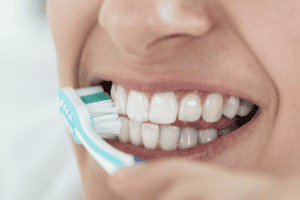Brushing your teeth is one of the most fundamental aspects of maintaining good oral hygiene. It’s a practice so ingrained in our daily routines that many of us might not even question its frequency or technique. But just how often should you be brushing your teeth, and why? Let’s delve into the science and best practices of oral care.

Why Brush?
Before we talk frequency, let’s discuss the reason behind brushing in the first place:
- Removing Plaque: Dental plaque is a soft, sticky film that builds up on your teeth and contains millions of bacteria. If left unchecked, these bacteria can cause cavities, gum disease, and other dental problems.
- Preventing Gum Disease: Regular brushing helps prevent gum diseases like gingivitis and periodontitis. These conditions can lead to tooth loss if not treated.
- Fresh Breath: Brushing reduces the bacteria that cause bad breath, ensuring that you’re not only looking after your dental health but also maintaining fresh breath.
The Recommended Frequency
The American Dental Association (ADA) recommends brushing your teeth twice a day, typically once in the morning and once before going to bed. Here’s why:
- Morning Brushing: Overnight, due to reduced salivation, there’s a proliferation of bacteria in your mouth. Brushing in the morning helps remove this build-up and freshens your breath.
- Night-time Brushing: Throughout the day, we consume various foods and drinks that leave particles and sugar behind, which can feed harmful mouth bacteria. Brushing before bed removes these remnants and reduces the chance of cavities.
But Can You Overdo It?
While brushing is crucial for dental health, there is a thing as too much of a good thing. Brushing more than three times a day can wear down your tooth enamel and damage your gums, especially if you’re applying too much pressure or using a hard-bristled toothbrush. If you’re someone who feels the need to brush after every meal, try to do so gently and consider using a soft-bristled brush.
Quality Over Quantity
It’s not just about how often you brush, but also how well:
- Duration: The ADA suggests brushing for two minutes each session. This provides ample time to thoroughly clean all areas of your mouth.
- Technique: Hold your toothbrush at a 45-degree angle to the gums and use short, gentle strokes. Don’t forget the inner surfaces of your teeth and your tongue.
- Toothpaste: Use fluoride toothpaste, as fluoride helps strengthen tooth enamel and reduce the risk of decay.
In Conclusion
While brushing twice a day is the general recommendation, remember that everyone’s mouth is different. It’s essential to speak with your dentist about any concerns or if you feel you might benefit from a different brushing routine. Combined with flossing daily and regular dental check-ups, brushing forms the cornerstone of a robust oral hygiene routine that will keep your smile healthy and bright.
